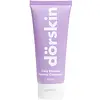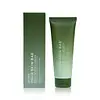What's inside
What's inside
 Key Ingredients
Key Ingredients

 Benefits
Benefits

 Concerns
Concerns

 Ingredients Side-by-side
Ingredients Side-by-side

Water
Skin ConditioningGlycerin
HumectantCocamide DEA
EmulsifyingCocamidopropyl Betaine
CleansingSodium Chloride
MaskingXanthan Gum
EmulsifyingPropylene Glycol
HumectantBenzoic Acid
MaskingCaprylyl Glycol
EmollientDisodium EDTA
Citric Acid
BufferingCentella Asiatica Extract
CleansingZinc PCA
HumectantGlycyrrhiza Glabra Root Extract
BleachingButylene Glycol
Humectant1,2-Hexanediol
Skin ConditioningCamellia Sinensis Leaf Extract
AntimicrobialPEG-40 Hydrogenated Castor Oil
EmulsifyingSalicylic Acid
MaskingGlycolic Acid
BufferingMilk Lipids
Skin ConditioningPentylene Glycol
Skin ConditioningPEG-60 Hydrogenated Castor Oil
EmulsifyingEthylhexylglycerin
Skin ConditioningCeramide NP
Skin ConditioningChlorhexidine Digluconate
AntimicrobialDisodium Phosphate
BufferingGlyceryl Caprylate
EmollientLactic Acid
BufferingPhytosphingosine
Skin ConditioningSodium Hyaluronate
HumectantLactobacillus/Pear Juice Ferment Filtrate
Skin ConditioningO-Cymen-5-Ol
AntimicrobialPotassium Sorbate
PreservativeSodium Benzoate
MaskingPhellodendron Amurense Bark Extract
Skin ConditioningBHT
AntioxidantSalix Alba Bark Extract
AstringentTocopheryl Acetate
AntioxidantRehmannia Chinensis Root Extract
Skin ConditioningMelia Azadirachta Leaf Extract
Skin ConditioningScutellaria Baicalensis Root Extract
AstringentHouttuynia Cordata Extract
Skin ConditioningGlycine Soja Seed Extract
Skin ConditioningHamamelis Virginiana Water
AstringentWater, Glycerin, Cocamide DEA, Cocamidopropyl Betaine, Sodium Chloride, Xanthan Gum, Propylene Glycol, Benzoic Acid, Caprylyl Glycol, Disodium EDTA, Citric Acid, Centella Asiatica Extract, Zinc PCA, Glycyrrhiza Glabra Root Extract, Butylene Glycol, 1,2-Hexanediol, Camellia Sinensis Leaf Extract, PEG-40 Hydrogenated Castor Oil, Salicylic Acid, Glycolic Acid, Milk Lipids, Pentylene Glycol, PEG-60 Hydrogenated Castor Oil, Ethylhexylglycerin, Ceramide NP, Chlorhexidine Digluconate, Disodium Phosphate, Glyceryl Caprylate, Lactic Acid, Phytosphingosine, Sodium Hyaluronate, Lactobacillus/Pear Juice Ferment Filtrate, O-Cymen-5-Ol, Potassium Sorbate, Sodium Benzoate, Phellodendron Amurense Bark Extract, BHT, Salix Alba Bark Extract, Tocopheryl Acetate, Rehmannia Chinensis Root Extract, Melia Azadirachta Leaf Extract, Scutellaria Baicalensis Root Extract, Houttuynia Cordata Extract, Glycine Soja Seed Extract, Hamamelis Virginiana Water
Water
Skin ConditioningGlycerin
HumectantButylene Glycol
HumectantAcrylates Copolymer
Sodium Cocoamphoacetate
CleansingCocamidopropyl Betaine
CleansingSodium Cocoyl Glycinate
CleansingSodium Chloride
MaskingSpirulina Platensis Extract
Skin ProtectingPropanediol
SolventHamamelis Virginiana Leaf Extract
Skin ConditioningGlycolic Acid
Buffering1,2-Hexanediol
Skin ConditioningSodium Hydroxide
BufferingXanthan Gum
EmulsifyingCoconut Acid
CleansingSodium Cocoate
CleansingTetrasodium EDTA
Caprylhydroxamic Acid
Water, Glycerin, Butylene Glycol, Acrylates Copolymer, Sodium Cocoamphoacetate, Cocamidopropyl Betaine, Sodium Cocoyl Glycinate, Sodium Chloride, Spirulina Platensis Extract, Propanediol, Hamamelis Virginiana Leaf Extract, Glycolic Acid, 1,2-Hexanediol, Sodium Hydroxide, Xanthan Gum, Coconut Acid, Sodium Cocoate, Tetrasodium EDTA, Caprylhydroxamic Acid
Ingredients Explained
These ingredients are found in both products.
Ingredients higher up in an ingredient list are typically present in a larger amount.
1,2-Hexanediol is a synthetic liquid and another multi-functional powerhouse.
It is a:
- Humectant, drawing moisture into the skin
- Emollient, helping to soften skin
- Solvent, dispersing and stabilizing formulas
- Preservative booster, enhancing the antimicrobial activity of other preservatives
Butylene Glycol (or BG) is used within cosmetic products for a few different reasons:
Overall, Butylene Glycol is a safe and well-rounded ingredient that works well with other ingredients.
Though this ingredient works well with most skin types, some people with sensitive skin may experience a reaction such as allergic rashes, closed comedones, or itchiness.
Learn more about Butylene GlycolCocamidopropyl Betaine is a fatty acid created by mixing similar compounds in coconut oil and dimethylaminopropylamine, a compound with two amino groups.
This ingredient is a surfactant and cleanser. It helps gather the dirt, pollutants, and other impurities in your skin to be washed away. It also helps thicken a product and make the texture more creamy.
Being created from coconut oil means Cocamidopropyl Betaine is hydrating for the skin.
While Cocamidopropyl Betaine was believed to be an allergen, a study from 2012 disproved this. It found two compounds in unpure Cocamidopropyl Betaine to be the irritants: aminoamide and 3-dimethylaminopropylamine. High-grade and pure Cocamidopropyl Betaine did not induce allergic reactions during this study.
Learn more about Cocamidopropyl BetaineGlycerin is already naturally found in your skin. It helps moisturize and protect your skin.
A study from 2016 found glycerin to be more effective as a humectant than AHAs and hyaluronic acid.
As a humectant, it helps the skin stay hydrated by pulling moisture to your skin. The low molecular weight of glycerin allows it to pull moisture into the deeper layers of your skin.
Hydrated skin improves your skin barrier; Your skin barrier helps protect against irritants and bacteria.
Glycerin has also been found to have antimicrobial and antiviral properties. Due to these properties, glycerin is often used in wound and burn treatments.
In cosmetics, glycerin is usually derived from plants such as soybean or palm. However, it can also be sourced from animals, such as tallow or animal fat.
This ingredient is organic, colorless, odorless, and non-toxic.
Glycerin is the name for this ingredient in American English. British English uses Glycerol/Glycerine.
Learn more about GlycerinGlycolic Acid is arguably the most famous alpha hydroxy acid (AHA) with tons of research backing its benefits.
It is found naturally in sugar cane but the form used in skincare is usually synthetic for purity and stability.
Glycolic acid removes the top layer of dead skin cells to allow newer and fresher ones to emerge.
AHAs work by breaking down the structural “glue” that holds old skin cells in place. When that buildup is gone, your skin can renew itself more efficiently.
Research also shows glycolic acid stimulates collagen production, helping to firm and thicken the skin over time. This is one of its biggest advantages over other AHAs.
Overall, glycolic acid helps with:
Fun fact: Glycolic acid boosts skin hydration by helping it produce molecules that increase hyaluronic acid naturally.
To work best, glycolic acid products should have a pH between 3-4 (that’s where exfoliation is most effective but still gentle on skin).
The pH and concentration of a product are key to its effectiveness:
It is normal to feel a slight stinging sensation when using glycolic acid. This usually fades as your skin adjusts.
Because glycolic acid has the smallest molecular size in the AHA family, it can penetrate deeper, which enhances its effectiveness but also makes it more likely to irritate sensitive skin.
If your skin is very sensitive or prone to rosacea, glycolic acid may be too strong; in that case, try milder options like lactic acid or a PHA instead.
Recent studies suggest glycolic acid might even help protect against UV damage. But don’t skip sunscreen! Freshly exfoliated skin is more sensitive to the sun.
Glycolic acid is a skincare superstar. It smooths, brightens, hydrates, and firms the skin. Unless you’re highly sensitive, it’s well worth adding to your routine.
Read more about some other popular AHA's here:
Learn more about Glycolic AcidChances are, you eat sodium chloride every day. Sodium Chloride is also known as table salt.
This ingredient has many purposes in skincare: thickener, emulsifier, and exfoliator.
You'll most likely find this ingredient in cleansers where it is used to create a gel-like texture. As an emulsifier, it also prevents ingredients from separating.
There is much debate on whether this ingredient is comedogenic. The short answer - comedogenic ratings don't tell the whole story. Learn more about comegodenic ratings here.
The concensus about this ingredient causing acne seems to be divided. Research is needed to understand if this ingredient does cause acne.
Scrubs may use salt as the primary exfoliating ingredient.
Learn more about Sodium ChlorideWater. It's the most common cosmetic ingredient of all. You'll usually see it at the top of ingredient lists, meaning that it makes up the largest part of the product.
So why is it so popular? Water most often acts as a solvent - this means that it helps dissolve other ingredients into the formulation.
You'll also recognize water as that liquid we all need to stay alive. If you see this, drink a glass of water. Stay hydrated!
Learn more about WaterXanthan gum is used as a stabilizer and thickener within cosmetic products. It helps give products a sticky, thick feeling - preventing them from being too runny.
On the technical side of things, xanthan gum is a polysaccharide - a combination consisting of multiple sugar molecules bonded together.
Xanthan gum is a pretty common and great ingredient. It is a natural, non-toxic, non-irritating ingredient that is also commonly used in food products.
Learn more about Xanthan Gum